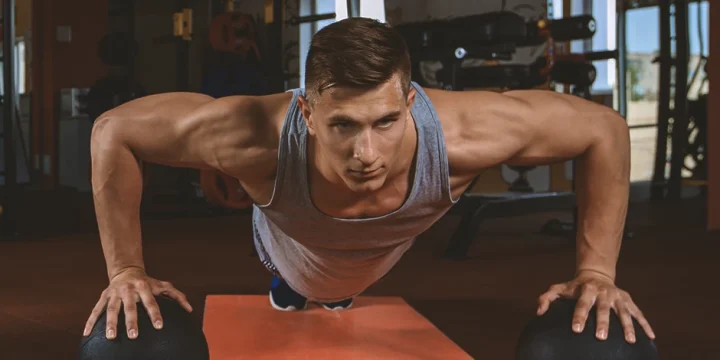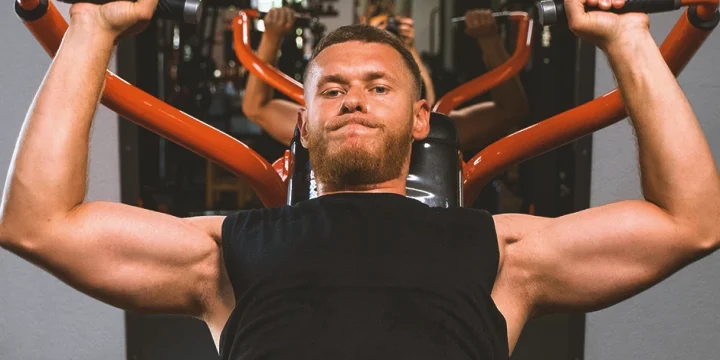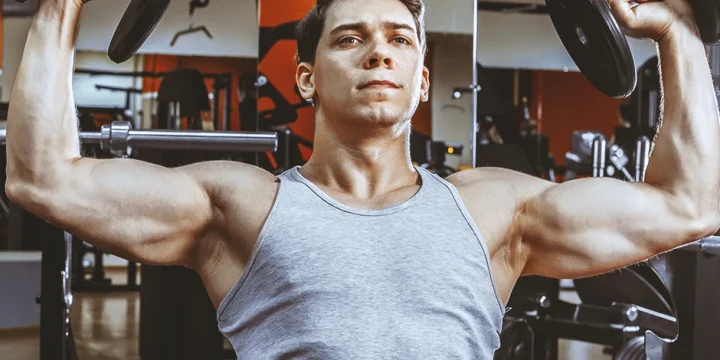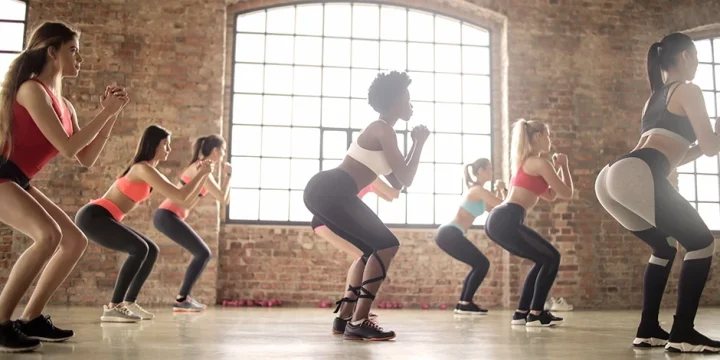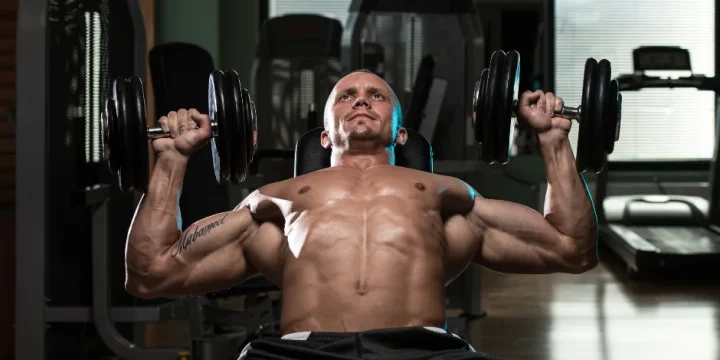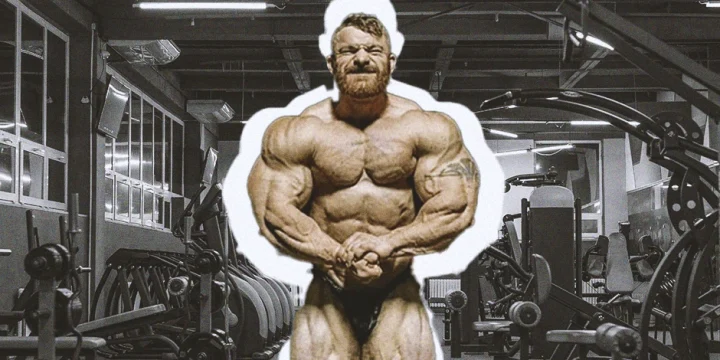The inner chest is often misunderstood, and claims of isolating and building this muscle through specific exercises can be misleading.
After reviewing various chest workouts and consulting a physiotherapist friend, I've selected some game-changing inner chest exercises that can transform your physique.
Keep reading because I've compiled all my findings into this article.
Quick Summary
- Inner chest exercises like the dumbbell fly, cable fly, dumbbell bench press, pullover, incline press, and decline press can help shape your upper body.
- While isolating the inner chest muscles is impossible, you can still target them by working the entire chest.
- A National Institute of Health study found that bench press training at 75 percent of one's one-repetition maximum, three times weekly, significantly increased chest muscle thickness in young men after just one week.
- As a fitness trainer, I advise maximizing chest workouts through full-range motion, reaching muscle failure with final reps, and complementing the routine with proper supplements.
Best Inner Chest Exercise Routine

The best inner chest exercise routine includes the following exercises, along with recommended sets and reps. Now, let's outline your workout before we dive into the details of these exercises.
- Dumbbell chest flys: 3 sets x 8–12 reps
- Cable flys: 3 sets x 8–10 reps
- Dumbbell bench press: 3 sets x 8–10 reps
- Dumbbell pullovers: 3 sets x 10–12 reps
- Incline press: 3 sets x 8–12 reps
- Decline press: 3 sets x 8–12 reps
Finish with regular or close-grip push-ups for as many reps as possible (AMRAP).
As a fitness trainer, I recommend beginners perform each exercise for two sets, and for those more advanced, I suggest incorporating supersets by doing three sets for each exercise while maintaining the same number of reps.
6 Best Inner Chest Exercises

Based on my research and many years of observation, here are the six best inner chest exercises, what makes them effective, and how to do them with perfect form.
1. Dumbbell Chest Flys
Dumbbell chest flies are effective for isolating the inner pecs, emphasizing a strong pec flex at the top of the motion. If you're a beginner, perform this exercise on the floor. As you refine your form, progress to a flat bench.
How-to:
- Lie on a flat bench with a dumbbell in each hand.
- Hold the dumbbells above your chest, palms facing each other, arms extended, and elbows slightly bent.
- Lower the dumbbells in a wide arc to the sides, maintaining a slight elbow bend and squeezing the pec muscles.
- Pause when your arms are parallel to the ground.
- Slowly bring the dumbbells back, keeping elbows slightly bent, and emphasize chest squeezing at the top.
- Repeat for reps.
As a fitness trainer, I recommend clients use a manageable weight, ensuring proper form to prevent overextending arms or using excessive weight and reduce the risk of shoulder injuries.
2. Cable Flys
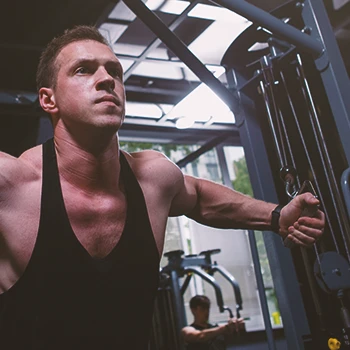
Cable flys, a cable variation of dumbbell flys, are excellent for beginners working on their inner chest.
How-to:
- Adjust the cable machine to your preferred height and attach the handles.
- Stand with one foot forward, grab handles with an overhand grip.
- Step forward for cable tension, extend arms in front.
- Bring arms out to the sides, slightly bending elbows, and squeeze the chest.
- Pause and squeeze when hands align with shoulders.
- Slowly bring hands back, maintaining elbow bend.
- Repeat for desired reps.
In our training sessions, I always emphasize keeping my clients' core engaged and maintaining a straight back to prevent lower back strain during the exercise.
Related: Cable Rear Delt Fly 101 Guide
3. Dumbbell Bench Press
In my experience, the bench press is more effective than the hammer squeeze press for recruiting chest muscle fibers.
How-to:
- Lie flat on a bench, feet firmly planted, with a dumbbell in each hand.
- Bring the dumbbells close together, palms facing each other, elbows bent at a 90-degree angle.
- Press the dumbbells upward, extending arms and keeping them close to your body.
- Pause at the top, squeezing your pecs with dumbbells directly above your chest.
- Slowly lower the dumbbells back down, keeping them close and maintaining a 90-degree elbow bend.
- Repeat for reps.
Related articles:
4. Dumbbell Pullovers
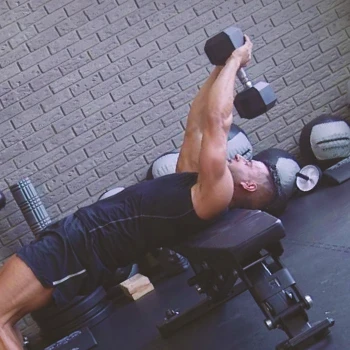
The dumbbell pullover is an excellent chest exercise that targets your pecs in a unique motion compared to other exercises, according to ResearchGate [1].
How-to:
- Select a light-weight dumbbell to avoid the risk of shoulder injury.
- Lie on a flat bench with feet firmly planted, knees bent at a 90-degree angle, and head, shoulders, and upper back in contact with the bench.
- Hold the dumbbell with both hands, palms pressed together, and fingers interlocked.
- Start with the weight directly above your chest, arms fully extended but not locked.
- Slowly lower the dumbbell behind your head, keeping your arms straight and the movement coming from your shoulder joint.
- Engage your chest muscles and reverse the motion, bringing the dumbbell back to the starting position.
- Repeat for reps.
In my opinion as a fitness trainer, you have the option to use a weight plate instead of a dumbbell for these exercises.
5. Incline Barbell Press
The incline barbell press is great for developing your upper chest and defining its inner section.
How-to:
- Set up an incline bench at a 30–45 degree angle, adjusting safety bars or having a spotter.
- Lie on the bench with feet flat, head higher than hips.
- Grab the bar with an overhand grip, slightly wider than shoulder-width.
- Unrack the barbell and bring it down to your chest, keeping elbows close.
- Pause, then press the bar back up, extending arms and squeezing your chest.
- Pause at the top, ensuring the bar is directly above your chest.
- Slowly lower the bar back down to your chest, keeping elbows close.
- Repeat for reps.
In our training, I advise clients to choose the right weight for the incline press, as it's more challenging than the bench press. If going heavy, having a spotter ready ensures added safety.
6. Decline Barbell Press
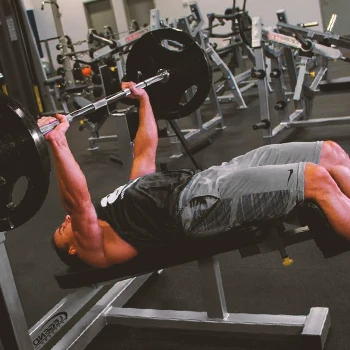
The decline barbell press targets your lower chest, contributing to a balanced physique when paired with the incline press.
How-to:
- Set up a decline bench at a 30–40 degree angle, adjusting safety bars or having a spotter.
- Lie on the bench with feet firmly pressed against the floor, head lower than hips.
- Grab the barbell with an overhand grip, slightly wider than shoulder-width.
- Unrack the barbell and bring it down to your chest, keeping elbows close.
- Pause, then press the bar back up, extending arms and squeezing your chest.
- Pause at the top, ensuring the bar is directly above your chest.
- Slowly lower the bar back down to your chest, keeping elbows close.
- Repeat for reps.
In my training experience, the decline barbell press is more challenging to escape from if you encounter difficulty compared to other bench presses. So, if you plan to lift heavy, having a spotter is crucial for added safety.
“Decline bench stations are typically the least popular of the free weight bench variations and it’s a great way to load your pecs on chest day.”
- Dr. Malik, MD, Fitness Expert
Is It Possible to Target the Inner Chest?
No, it is not possible to specifically target the inner chest due to its anatomy. The focus can only be on the upper and lower parts of your chest.
However, you can develop the entire chest through various exercises, contributing to the overall development, including the inner chest.
Anatomy of the Pectorals
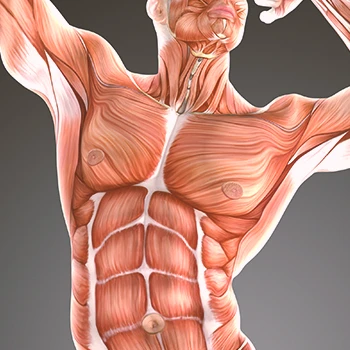
According to research from the National Institute of Health, the pectoral muscles include two groups: the pectoralis minor and the pectoralis major [2].
Details on these muscles include:
- Pectoralis major: A large chest muscle with two parts—the clavicular head (upper chest) and the sternal head (lower chest). Functions involve shoulder flexion, adduction, and rotation.
- Pectoralis minor: A thin, triangular muscle beneath the pectoralis major in the upper chest. Its primary function is moving the scapula forward and backward.
Training Tips for Maximum Gains
Here are a few training tips that’ll help you make the most of your inner chest workouts:
- Perfect form: An injury can set your progress back by months, so perform every rep with perfect form to avoid unnecessary muscle strain.
- Full range of motion: A study from the National Institute of Health showed that performing your exercises with a full range of motion is beneficial to building muscle mass [3].
- Rep till failure: PubMed research revealed that working out till muscle failure is highly effective in building muscle hypertrophy [4].
- Supplement your protein intake: To make the most of your recovery, supplement your high-protein diet with a quality protein shake.
FAQs
What Causes Gap in the Chest?
The lack of muscles above your sternum causes a gap in the chest. Having a gap over your chest is normal for most people.
Is Inner Chest Genetic?
Yes, the inner chest is genetic. The gap between your inner pecs depends on your genetics. Some are able to close this gap through exercise, while others may be genetically gifted with muscle mass that reduces the gap.
How Do I Close the Gap Between My Pecs?
You can close the gap between your pecs by doing hypertrophy-focused chest exercises. Since the width of the gap between your inner pec muscles is genetic, some may not be able to close it as much as others.
References:
- https://www.researchgate.net/publication/51695295_Effects_of_the_Pullover_Exercise_on_the_Pectoralis_Major_and_Latissimus_Dorsi_Muscles_as_Evaluated_by_EMG
- https://www.ncbi.nlm.nih.gov/books/NBK545241/
- https://www.ncbi.nlm.nih.gov/pmc/articles/PMC6977096/
- https://pubmed.ncbi.nlm.nih.gov/31895290/
About The Author
You May Also Like
